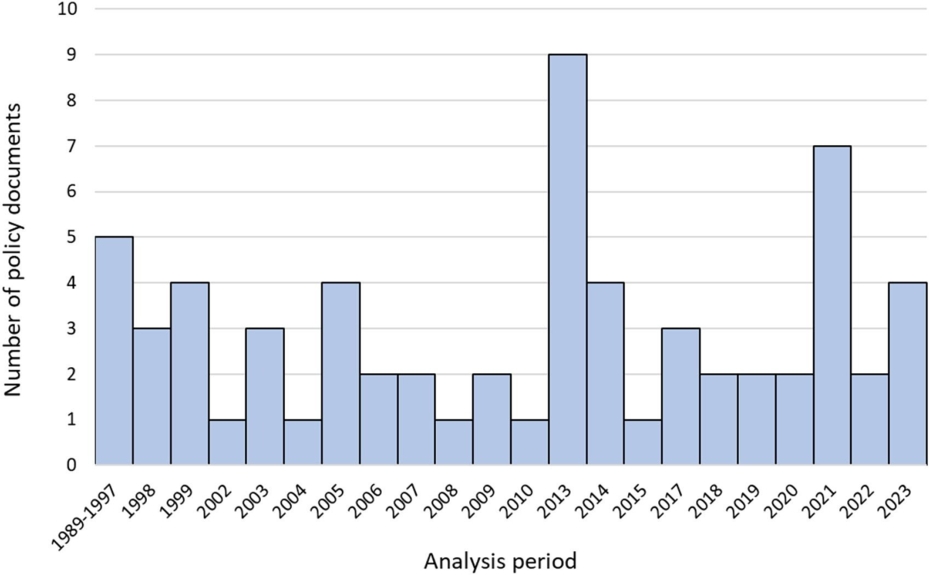
2.3 The EU Nature Restoration Regulation

The EU Nature Restoration Regulation sets binding targets for forest restoration across Europe, requiring Member States to develop National Restoration Plans. Its success depends on aligning ecological goals with national laws and engaging stakeholders effectively.
The EU Nature Restoration Regulation (EU-NRR) constitutes the first EU-wide, directly applicable, and legally binding policy instrument that defines explicit EU common standards for (ecological) forest management, and the ecological management of other ecosystems. The NRR sets ambitious, measurable restoration targets. It calls for the recovery of 30% of forest habitats and species not in good ecological status by 2030, a further 30% by 2040, and another 30% by 2050. These targets apply both inside and outside the Natura 2000 protected areas network, including Natura 2000 forest sites (Art. 4). The regulation also defines ecological criteria for managed forests, such as deadwood, uneven-aged structures, native tree species, species diversity, connectivity, forest birds, and forest soils (Art. 12). The policymaking process faced tight votes in the European legislative institutions. It also met strong opposition from forest ownership and industry associations, who raised concerns about how restoration targets might affect the economic viability of the forest sector and interact with climate change impacts. However, the final legislative text was adopted in June 2024 and came into force shortly afterwards.
Regarding managed forest ecosystems outside the Natura 2000 forest sites, the EU member states (MS) are required to ensure an increasing trend at the national level of the common forest bird index as well for at least six out of seven further forest ecosystem restoration indicators, including a) standing deadwood, b) lying deadwood, c) share of forests with uneven-aged structure, d) forest connectivity, e) stock of organic carbon, f) share of forests dominated by native tree species and g) tree species diversity.
For the development of draft National Restoration Plans (NRPs), which are due for submission by 1 September 2026, MS are required to carry out the preparatory monitoring and research needed to identify the restoration measures needed to meet restoration targets and to quantify the area in need of restoration. In developing their National Restoration Plans (NRPs), EU MSs have to align these plans with existing policy programmes and to leverage synergies. These can include coordination within their CAP Strategic Plans, the 2030 renewable energy targets, and the conservation measures established for Natura 2000 sites under the EU Habitats and Birds Directives.
One key provision of the EU-NRR is the facilitation of an open, transparent, inclusive and effective participation of the public, including all relevant stakeholders, at an early stage in the preparation process. Since organized forest and landowners and industry representatives from the primary sector adopted a rather negative attitude towards the legislative initiative, hearing their needs and including their expertise in the development of the NRPs will be key for the effective implementation on the ground.
Although the EU Nature Restoration Regulation (EU-NRR) is directly applicable and does not require transposition into national law, a certain degree of alignment with national forest legislation is likely essential for the effective and coherent implementation of National Restoration Plans (NRPs). It is also important for achieving progress on key forest ecosystem restoration indicators. In this context, in our publication From sectoral policy change to cross-sectoral (dis)integration? A longitudinal analysis of the EU's forest and rural development policy - ScienceDirect we present a comprehensive analysis of the forest regulatory frameworks of all 27 EU Member States. These are grouped based on the coverage, coherence and stringency of the provisions of their national forest laws related to key forest ecosystem restoration indicators and practices outlined in the EU Nature Restoration Law (e.g., 1) clearcutting regulations and 2) mandatory reforestation, both as proxies for the support of deadwood, native and diverse tree species, and uneven-aged forests; 3) forest set asides as proxy for deadwood, and forest connectivity; 4) deadwood regulations, and 5) forest birds protection rules). We encourage you to consult these findings to identify both regulatory synergies and potential gaps between EU and national levels.
Related resources
From sectoral policy change to cross-sectoral (dis)integration? A longitudinal analysis of the EU’s forest and rural development policy
We analysed the role of the Common Agricultural Policy (CAP) and its rural development fund in financing relevant measures over time. The importance of CAP funding for relevant measures is very limited due to a low provision of financial resources for forest-related measures and a limited uptake of these funds by EU Member States.




